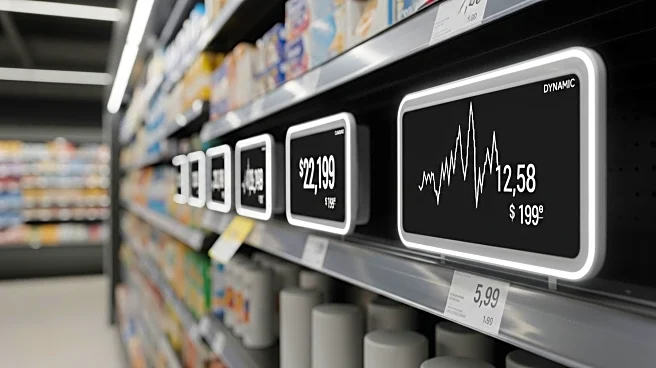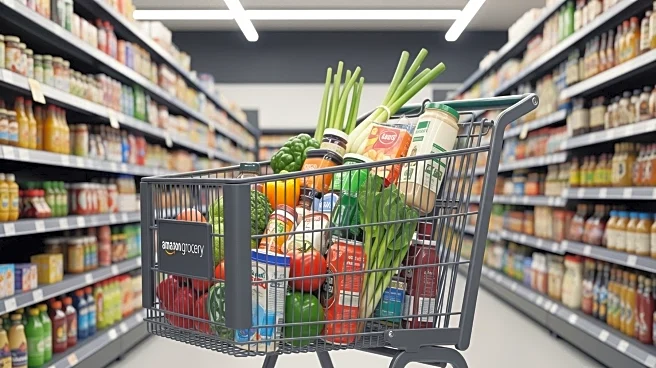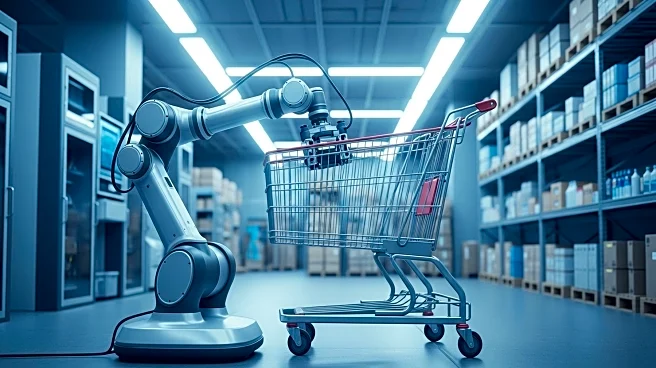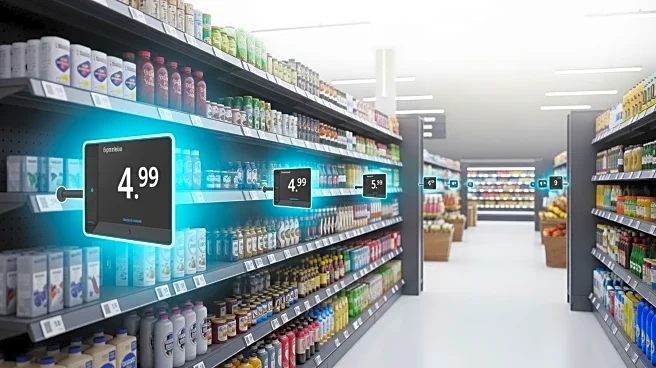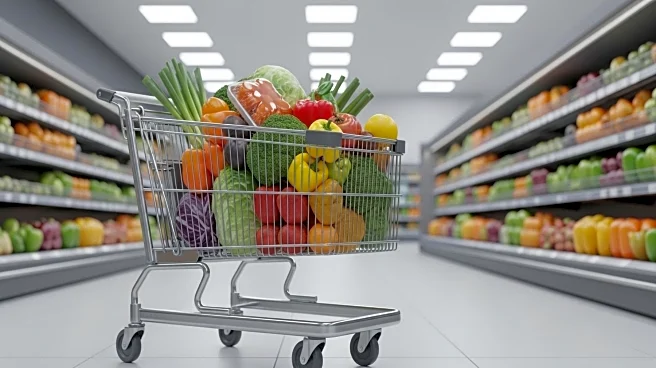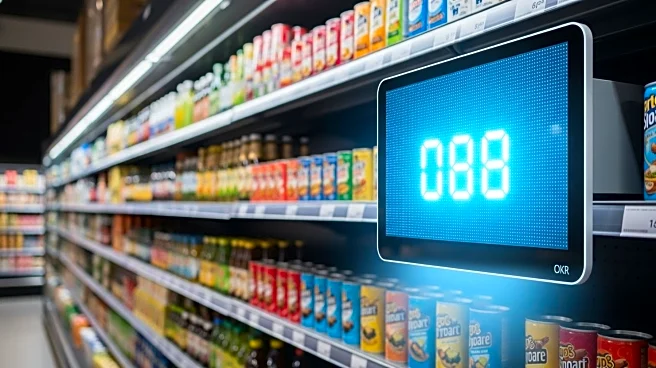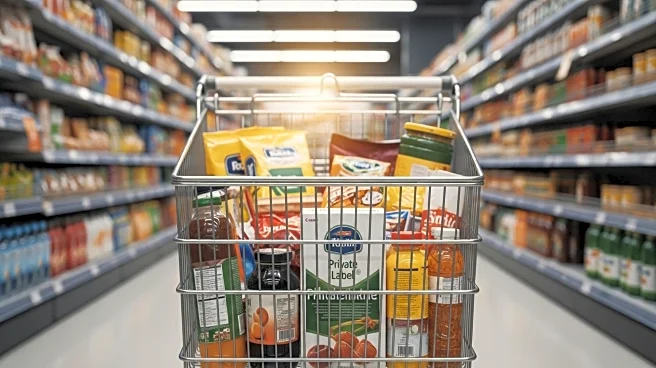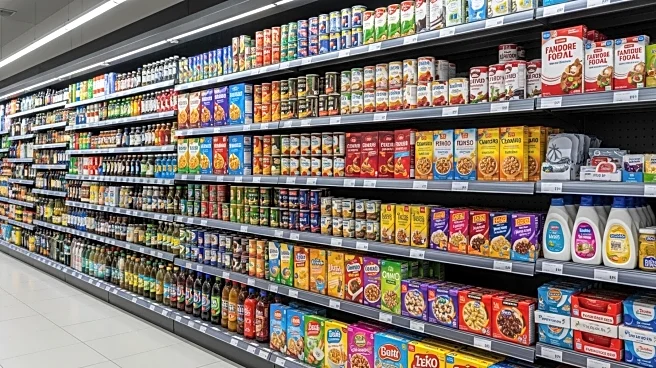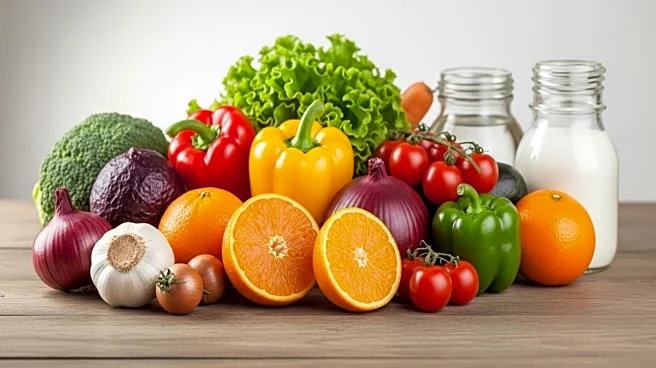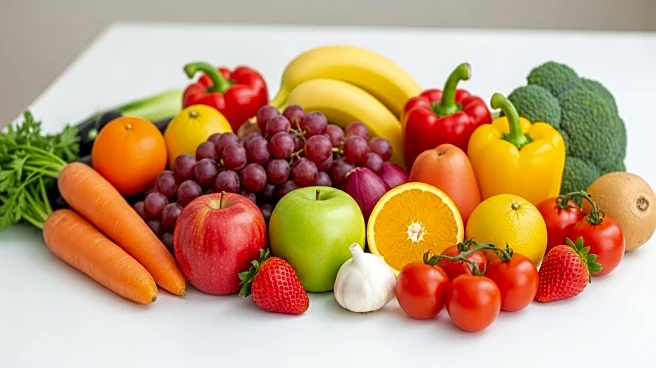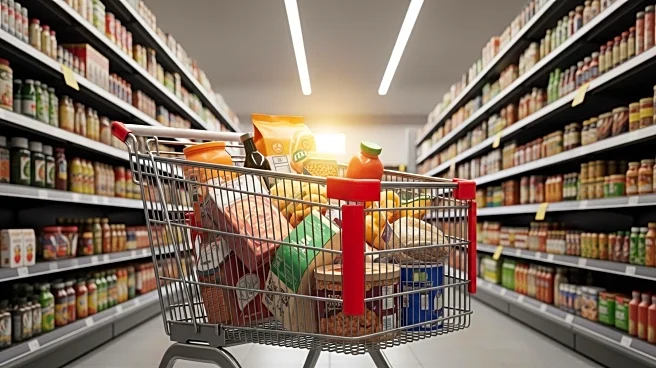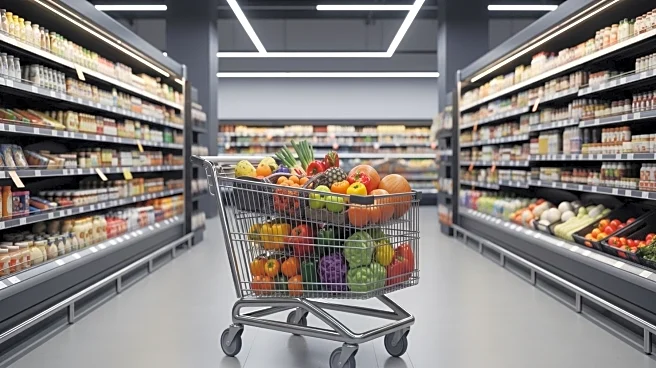What is the story about?
What's Happening?
Electronic shelf labels, which are digital screens displaying item prices, are increasingly replacing traditional paper price tags in U.S. grocery stores. This technology is already in use at major retailers like Whole Foods, Amazon Fresh, and Kroger, and is expected to become more widespread. The global market for electronic shelf labels was valued at $1.85 billion in 2024 and is projected to grow to $7.54 billion by 2033. Walmart plans to implement these labels in 2,300 stores by 2026, allowing for rapid price updates via a mobile app. However, there are concerns from lawmakers such as Sen. Elizabeth Warren and former Sen. Bob Casey about the potential for dynamic pricing, where prices could fluctuate based on demand or other factors. Kroger has denied engaging in surge pricing, emphasizing that the technology helps manage inventory and reduce food waste.
Why It's Important?
The adoption of electronic shelf labels represents a significant shift in the retail industry, potentially affecting pricing strategies and consumer behavior. While the technology offers operational efficiencies and the potential to reduce food waste, it also raises concerns about price manipulation during high-demand periods. This could impact consumer trust and spending habits, particularly if dynamic pricing becomes prevalent. Retailers like Kroger and Amazon have stated they do not plan to use surge pricing, but the possibility remains a point of contention. The broader implications for the retail sector include increased competition and the need for transparency in pricing practices to maintain consumer confidence.
What's Next?
As electronic shelf labels become more common, retailers will need to address consumer concerns about dynamic pricing and ensure transparency in their pricing strategies. Lawmakers may continue to scrutinize the use of this technology to protect consumer interests. Retailers might also explore further innovations in inventory management and pricing strategies to enhance customer experience and operational efficiency. The ongoing dialogue between retailers, consumers, and policymakers will likely shape the future of pricing practices in the grocery industry.
Beyond the Headlines
The introduction of electronic shelf labels could lead to broader changes in retail operations, including the potential for real-time pricing adjustments and personalized shopping experiences. This technology may also influence consumer expectations for price transparency and fairness, prompting retailers to adopt more sophisticated data analytics to balance profitability with customer satisfaction. Additionally, the environmental benefits of reduced food waste could align with growing consumer demand for sustainable practices, further driving the adoption of electronic shelf labels.
AI Generated Content
Do you find this article useful?
